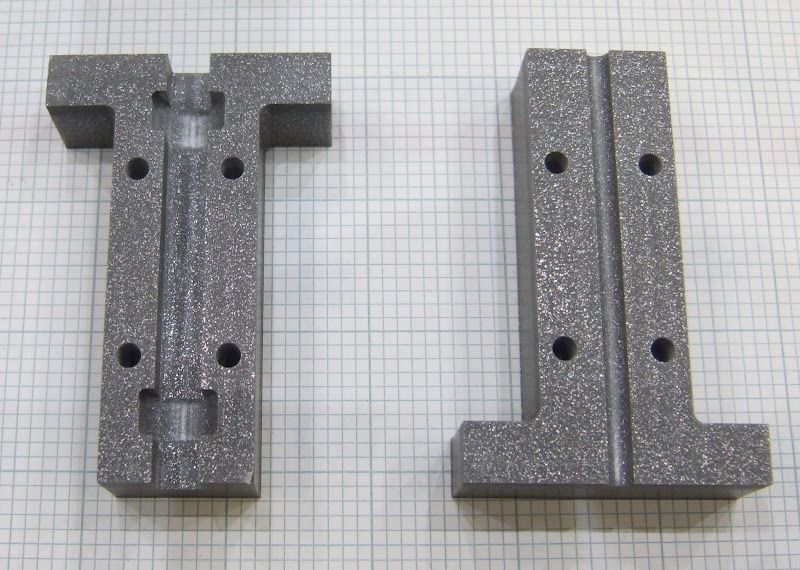I have tried many other surfaces including various woods and metals (with and without primer), melamine and several other types of foam board but nothing worked. Obviously HDPE sticks to HDPE so I decided to investigate that further.
My first idea was to use a thin sheet of HDPE cut from a milk bottle. This makes a nice surface to extrude onto but the problem is holding it down. I first stuck it down with double sided tape but the heat melts the glue. Sticking it to a sheet of aluminium to take the heat away improved matters and I was able to get slightly less warping than with foam board.

To compare the warping on different base materials I made a test shape that is a 40mm x 10mm x 20mm open box with 1mm walls and measured how much the corners lift using a simple jig.

With foam board I was getting 0.83mm lift between corners and the middle. With HDPE stuck to aluminium I got 0.76mm. Not much better because the glue of the sticky tape stretches under the curling force.
I needed a thick HDPE base and I had heard that plastic kitchen chopping boards are made from HDPE. I bought a new one from ASDA which looks like this :-

It is 5mm thick, opaque and quite rigid. I realised it was very different from the other chopping boards we have which I think came from IKEA.

These are 10mm thick and made from a softer, more translucent plastic. To find out which was HDPE I used the flow chart on this website www.texloc.com/ztextonly/clplasticid.htm. I concluded the thin hard one from ASDA is HDPE and the thicker softer one from IKEA is PP. HDPE seems to stick equally well to both of them but the HDPE one warped a bit when it was only held down with masking tape, so I decided to go with the PP one. I cut it up and bolted it down to my XY-table. It was a bit curved due to years of dishwasher use but bolting it down pulled it flat.

Surprisingly, if I lay down a raft at 200°C it sticks well but can be easily prized off again with a penknife. The board is marked slightly but it can be reused over and over again.

I extrude the object at 240°C so that it welds to the raft and itself, and I turn the fan on after the first layer so that the object cools to room temp as fast as possible.
The board is strong enough to hold the object completely flat while it is attached but when it is removed it does still curl a bit. I measured 0.44mm on my jig so that is about half the curling I was getting with foam board. Other than extruding onto a convex surface, I think that is the best that can be achieved for that shape with HDPE at room temperature. Here are the three tests side by side :-

Next I will look at different solid shapes to see if they warp more or less.









